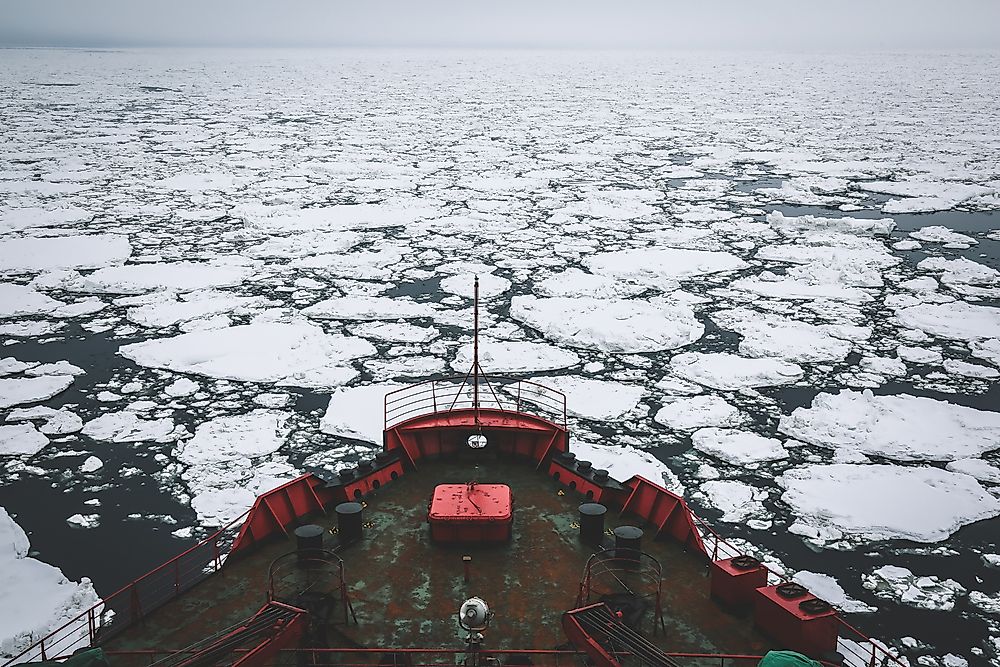What Is A Nuclear-powered Icebreaker?

A nuclear-powered icebreaker is a water vessel (ship or boat) that relies on nuclear reactors for propulsion. All of the world’s nuclear-powered icebreakers are owned by Russia and navigate the icy waters of the Northern Sea Route across the Arctic Ocean. The route is notoriously challenging to navigate due to the freezing of the waters during the winter, necessitating the use of icebreakers. While diesel icebreakers do exist, these require frequent refueling which is extremely difficult in the Arctic. There also exist nuclear-powered icebreakers that navigate through shallow waters of rivers. Additionally, there are support vessels that assist in the storage and dumping of nuclear waste.
The Northern Sea Route
The maritime route is found along Russia’s Arctic coastline. This maritime route experiences one of the lowest temperatures on earth, causing the waters to freeze solid for a total of ten months each year. During winter, the ice in the sea can be as much as 8.2 feet in thickness. The Northern Sea Route has one of the highest concentrations of icebreakers in the world. The melting ice caps in the Arctic caused by global warming are expected to increase the maritime traffic in the Northern Sea Route.
Types
The first nuclear-powered icebreaker in the world was Russia’s NS Lenin that was launched in 1957. The ship experienced two significant accidents since starting operations in 1959 and was retired in 1989. The pioneering ship was later converted to a museum ship, instead of being broken down. The nuclear-powered icebreakers are classified into three types based on their specifications; the Arktika class, the Taymyr class, and the LK-60Ya class. The Taymyr class is made up of two vessels; the Taymyr and the Vaygach, both of which are river icebreakers.
Arktika Class
Most of the nuclear-powered icebreakers fall under the Arktika class which are characterized by a maximum displacement of 25,000 tons, a double hull, a maximum length of 522 feet, two OK-900A 171-MW reactors and a maximum speed of 22 knots. These ships require a relatively small crew to operate, ranging between 138 and 200 individuals. Most Arktika class vessels have swimming pools, cinema, and gymnasium facilities, while some have the capacity of carrying numerous zodiac boats and two helicopters (such as the NS Rossiya) and feature restaurants and libraries. The NS Arktika, a nuclear-powered Arktika-class icebreaker, reached the North Pole in August 1977, becoming the first surface ship to ever achieve the feat. The largest icebreaker of this class is the NS 50 Lyet Pobyedi, which has a length of 522 feet.
Uses
Due to their ability to navigate through frozen seas, nuclear-powered icebreakers have a wide array of uses. These sturdy vessels have been used to ferry scientists through the Arctic Ocean to conduct scientific research. The icebreakers can also be used to tow damaged ships through the ice, to safety. The icebreakers are also used in Arctic tourism, through the transportation of tourists in expeditions to the North Pole. However, the primary use of the nuclear-powered icebreakers is to guide other ships through the icy maritime sea, breaking the ice surface to create a path for ships.











